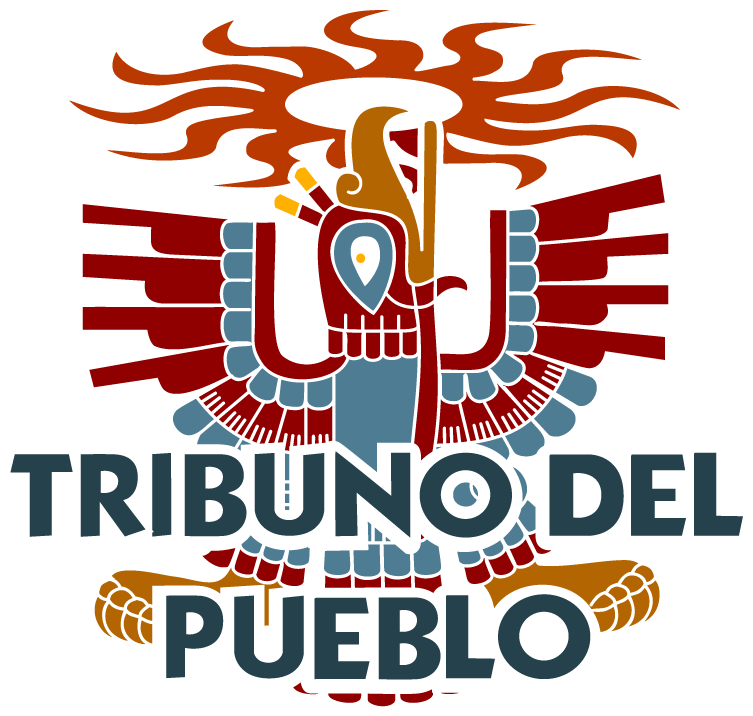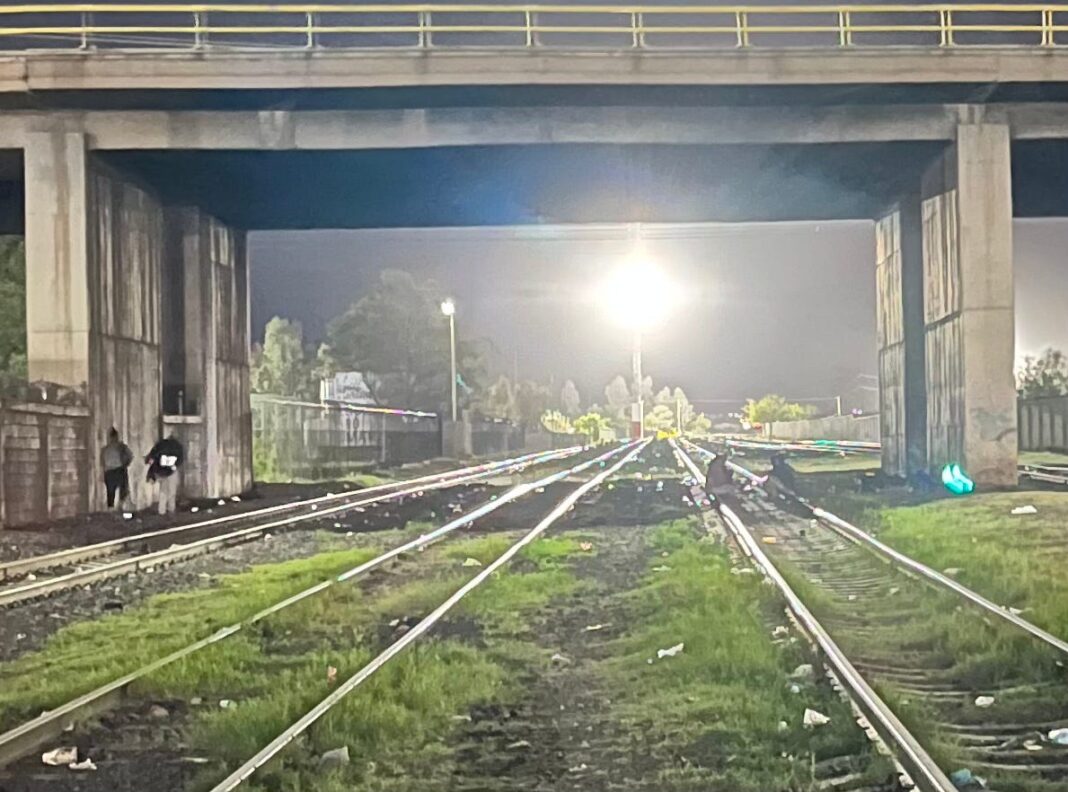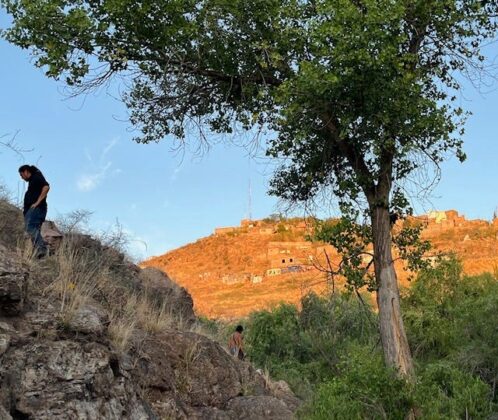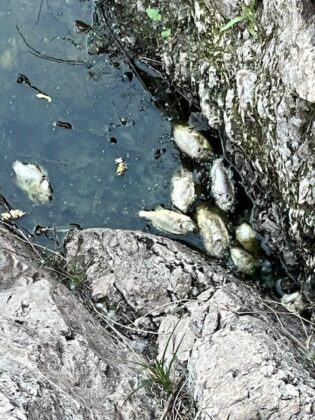The following article was first published on The Border Chronicle on April 20, 2023. According to Todd Miller “This photo-essay looks into rivers and water, farming and conflict, rainbows and herons, climate change and migration from and through the Mexican borderlands.”
In the train yard on the outskirts of the city of Chihuahua, a guy sitting underneath the bridge asked me how many countries I had visited in my life. “Have you been to a lot of them?” he asked. We had just met. I had approached him and seven other Venezuelans, accompanied by journalists from the independent media outlet Raíchali and people from Chihuahua’s migrant aid organization Uno de Siete Migrando, a name that reminds the world that one out of seven people is on the move. The man told me he had been to 14 countries. As he named them—Colombia, Panama, Costa Rica, Nicaragua, Honduras, Guatemala, etc.—I realized he was naming all the countries they had passed through, for weeks, months, to get to that remote train yard.
I took the above photo and the others throughout this essay during a trip to Chihuahua last week in which I was looking at water, militarization, conflict, and migration in the northern Mexico borderlands. As you can see, the Venezuelan group was waiting for a train for the final leg to Ciudad Juárez, 231 miles away. It was 9:30 p.m. Though we were far from the actual border, a security truck rumbled through the gravel with a bright spotlight, which made it feel as if we were in an enforcement zone. I was reminded of similar scenarios in southern Mexican train yards in Tabasco and Chiapas. Just the day before, hundreds of people, principally from Venezuela, Colombia, and Honduras, attempted a mass crossing from Ciudad Juárez to the United States. Fresh on people’s minds was the March 28 fire that killed 40 people locked up in an immigration prison in Juárez.
 To get to the train yard, we walked by a maquila run by the U.S. company Maxion. The company’s sign, in English, read “Maxion Wheels Matter.” The company’s slogan is “We move mobility forward”—a dizzying notion, given the maquila’s location right by the train yard where hundreds of migrants hop on the train on any given day heading north. On display was the omnipresent discrepancy between who has mobility and who does not.
To get to the train yard, we walked by a maquila run by the U.S. company Maxion. The company’s sign, in English, read “Maxion Wheels Matter.” The company’s slogan is “We move mobility forward”—a dizzying notion, given the maquila’s location right by the train yard where hundreds of migrants hop on the train on any given day heading north. On display was the omnipresent discrepancy between who has mobility and who does not.
According to Glassdoor, the average annual salary for a line worker at Maxion is $101,748 pesos, or about US$5,653, US$471 per month. According to El Economista, four out of every 10 Mexicans can’t afford a basic market basket. The price of a gallon of milk, for example, tops US$4. People migrate for many reasons, but making ends meet is an important one.
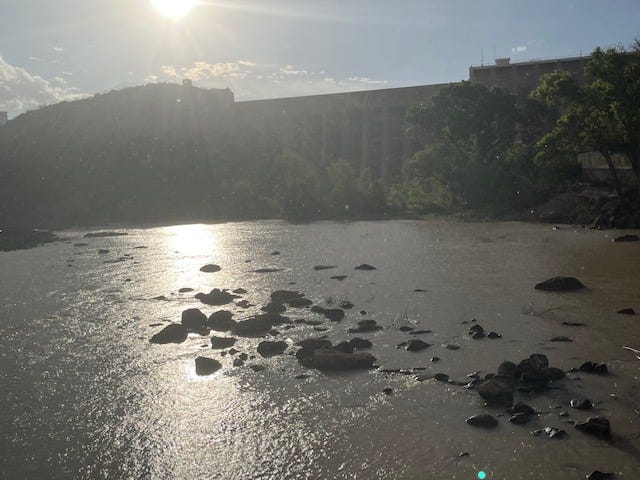
Another key reason is the changing weather. The U.S. Southwest and northern Mexico are experiencing what scientists have defined as a mega-drought that now has lasted more than 22 years. This is the longest-recorded drought since 800 CE, and, according to scientists, it has been exacerbated by the changing climate. This was one of the reasons I was in Chihuahua. Pictured above is the Francisco L. Madero dam, which the Mexican National Guard commandeered in 2020. This was one of the three dams militarized by the Mexican federal government after CONAGUA, the water commission, declared that it would be sending water to the United States, as stipulated by a 1944 water treaty, much to the chagrin of local producers. Right after this declaration, the mega-drought bared its teeth. The result was a 10-month water war. One person I interviewed told me he was thrown to the ground at the Madero dam, along with his son, and beaten up by the National Guard.
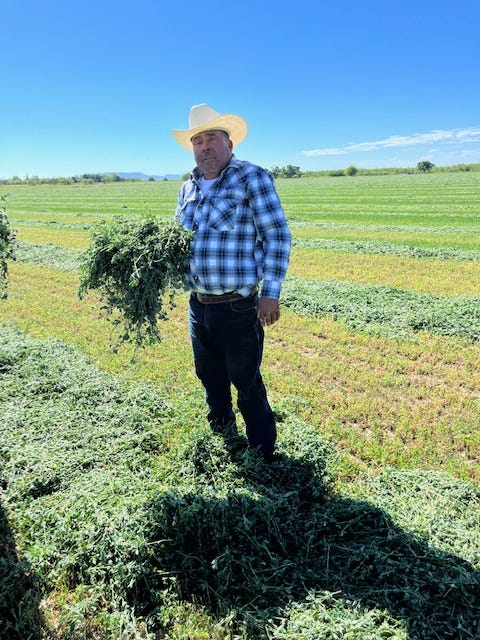
Jesús Mata, pictured here with his alfalfa crop, stormed the nearby Boquilla dam, which was also militarized by the National Guard. He said he carried a garrote de hierro (an iron club) to the front lines, adding that he had never experienced tear gas before. That action in September 2020 forced the National Guard to leave the dam after many people were injured and detained, and one person died. I am working on a book that looks into this, and will have more on this later.
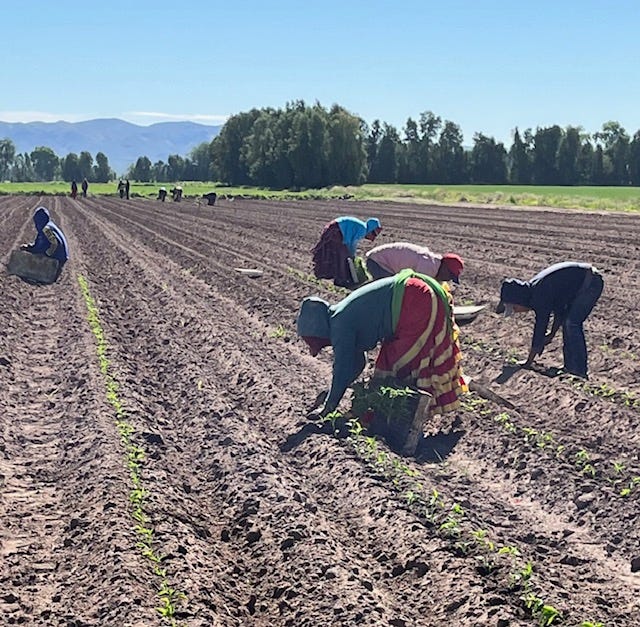
Here are farmworkers planting jalapeños in a field irrigated with water from the Boquilla dam. These chiles will be smoked and exported to the United States as the famous chipotle pepper. Many of these jornaleros (day laborers) were from the Sierra Tarahumara, an area of significant forced displacement under the threat of violence. The average daily wage for a farmworker in Mexico is 167 pesos, or a little over US$9.
Another dam I visited was the Chuvíscar in the city of Chihuahua. I was with a group called Salvemos los Cerros de Chihuahua. Luis Andrés Rivera—the group’s spokesperson, pictured above—walked along the river in search of dead fish. And, lo and behold, we found them—as pictured above—hundreds of dead fish floating on the surface of the water. The river had been pollutedby BAFAR, a Mexican company with its international headquarters in El Paso, Texas, that makes processed meats like bologna, hot dogs, and chicken nuggets. It had been dumping its waste in the water upriver from where the fish appeared, though it claimed to have stopped in 2021. Salvemos los Cerros de Chihuahua has been working on these issues for years, cleaning up the rivers and undertaking reforestation projects, as well as promoting laws and igniting campaigns to protect the living earth. “We are anti-capitalist, radical, with the face of a Boy Scout,” Luis told me with a smile.
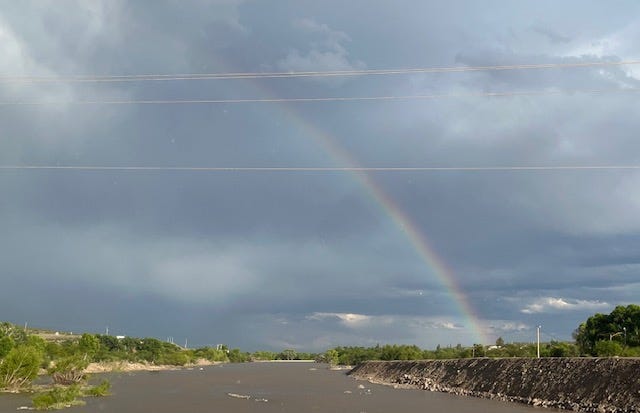
The day I visited the Francisco Madero dam, an arching rainbow came with a late-afternoon storm. I took this picture with my back to the dam, looking into the San Pedro River, which is an important resting spot for migratory birdstraveling through Chihuahua, such as the yellow-breasted thrush, red-winged blackbird, and the white pelican.
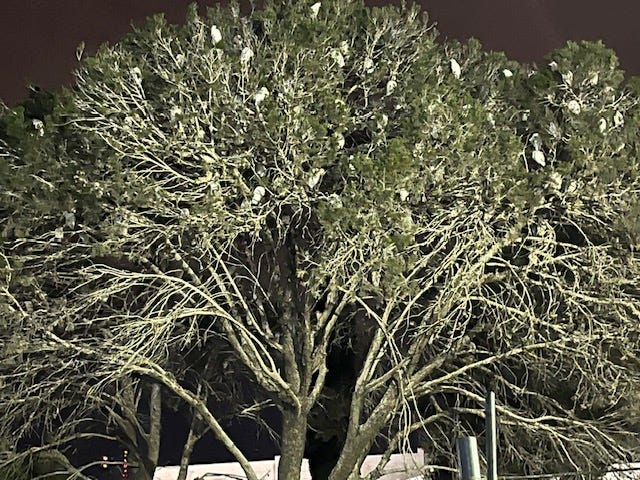 And speaking of migratory birds, we came upon dozens of herons perched on a tree on the property of Maxion’s maquila, as we walked away from the train yard on the outskirts of the city of Chihuahua. We noticed this after we left the seven Venezuelan migrants waiting for the train. There was something about this tree with garzas that brought a sense of awe, a sense of new possibilities, a sense that something unexpected could happen.
And speaking of migratory birds, we came upon dozens of herons perched on a tree on the property of Maxion’s maquila, as we walked away from the train yard on the outskirts of the city of Chihuahua. We noticed this after we left the seven Venezuelan migrants waiting for the train. There was something about this tree with garzas that brought a sense of awe, a sense of new possibilities, a sense that something unexpected could happen.
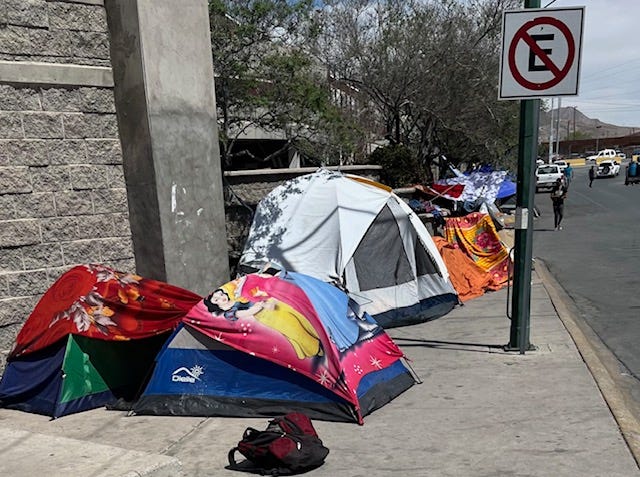 In Ciudad Juárez, right next to the international bridge, there is a makeshift camp, pictured above. People are waiting to cross, many with claims for asylum. When I was about to cross back into the United States, I thought about the people I had met in the Chihuahua train yard a couple days before. I wondered if they were able to get on a train and make it to the border. I wondered if my friend made it to his 15th country.
In Ciudad Juárez, right next to the international bridge, there is a makeshift camp, pictured above. People are waiting to cross, many with claims for asylum. When I was about to cross back into the United States, I thought about the people I had met in the Chihuahua train yard a couple days before. I wondered if they were able to get on a train and make it to the border. I wondered if my friend made it to his 15th country.
El Tribuno del Pueblo brings you articles written by individuals or organizations, along with our own reporting. Bylined articles reflect the views of the authors. Unsigned articles reflect the views of the editorial board. Please credit the source when sharing: tribunodelpueblo.org. We’re all volunteers, no paid staff. Please donate at http://tribunodelpueblo.org to keep bringing you the voices of the movement because no human being is illegal.
